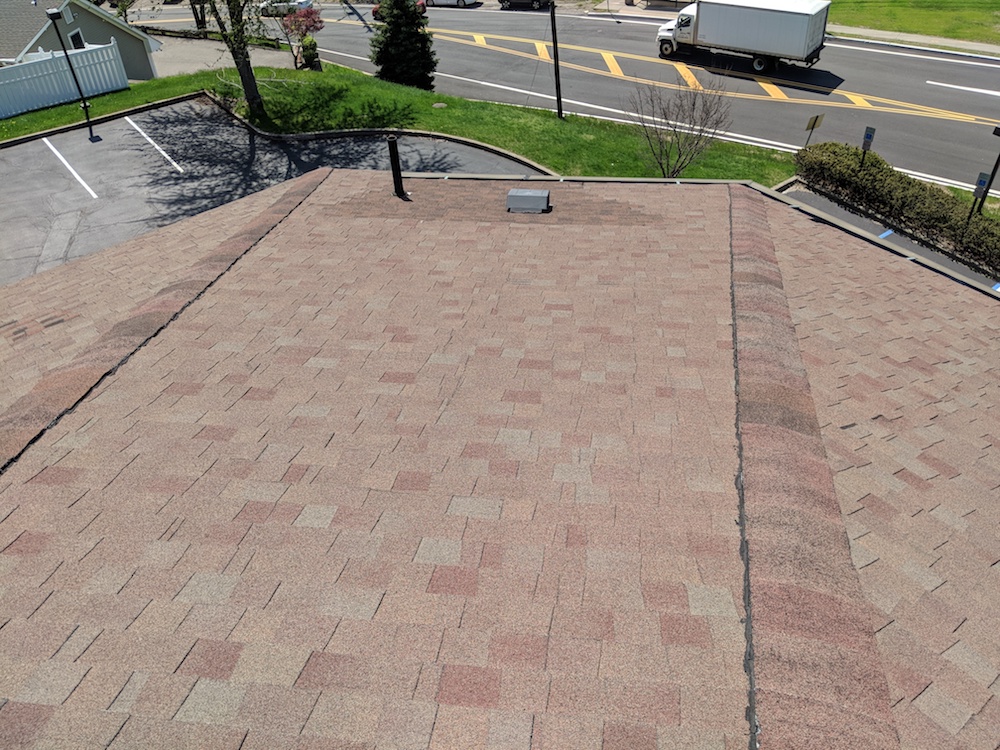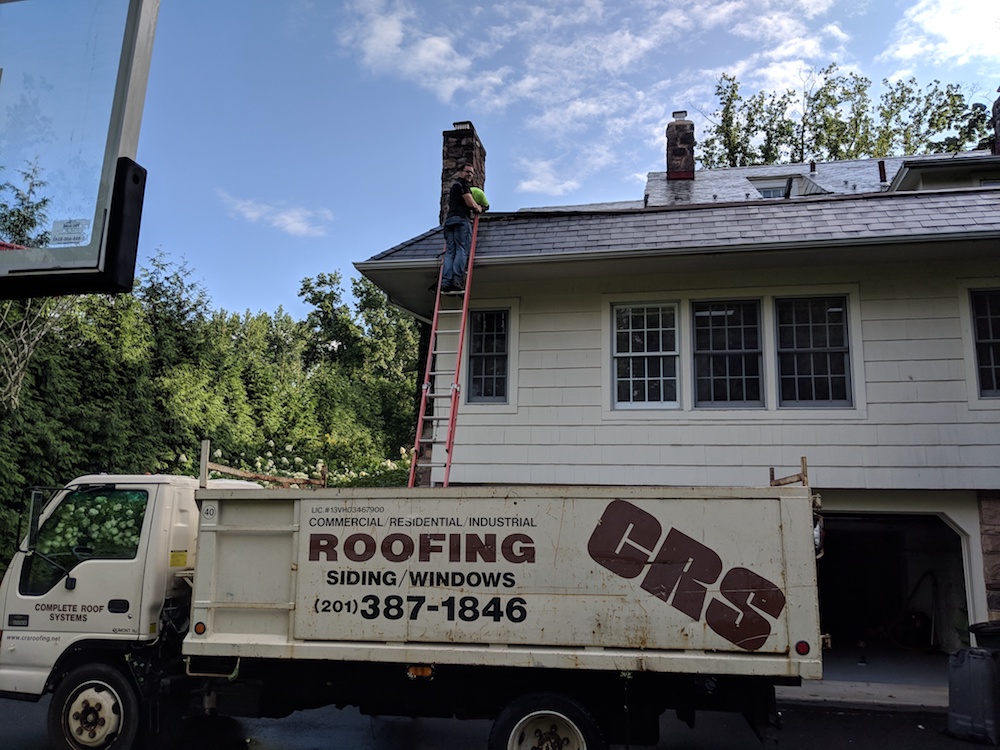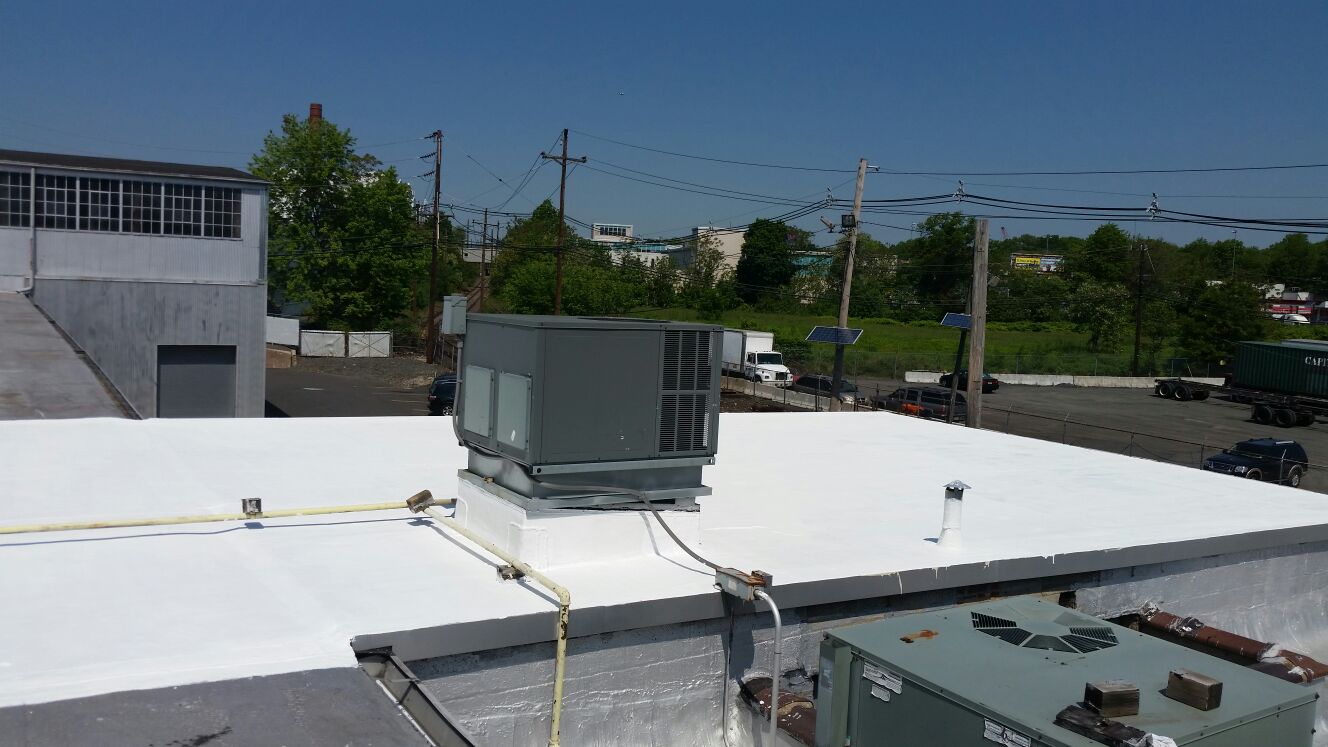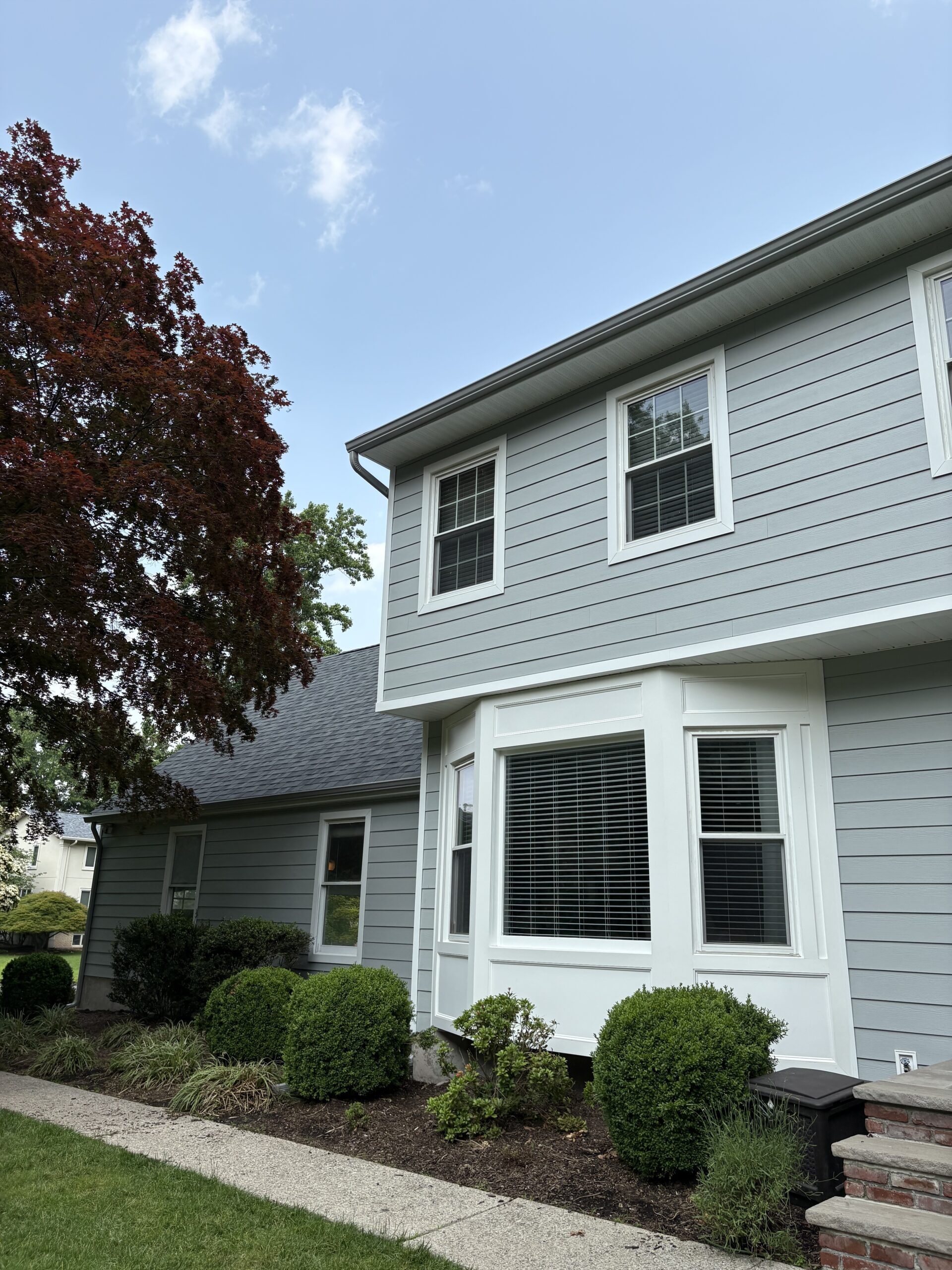Proper roof ventilation allows a home to breathe while poor ventilation suffocates it. Ventilation and attic insulation are both important. Attic insulation reduces the burden on ventilation systems. It separates outdoor air from conditioned air in the living space.
What Exactly is Roof Ventilation?
A roof is thought of as “ventilated” when there is sufficient airflow through the attic below. When air moves through open places under the roof, warm, moist air from the living space is removed. In the summer, good ventilation removes attic air heated due to the greenhouse effect. In all seasons, proper airflow moderates attic temperatures while evacuating humid air.
In general, proper roof ventilation is achieved through the proper placement of the right number of intake and exhaust vents. Good ventilation offsets the greenhouse effect caused by the sun’s ultraviolet rays absorbed by your roof system.
Intake Vents
In northern New Jersey, one of the more common intake vents is the ventilated soffit. Air is drawn into the attic through narrow slits in aluminum or vinyl soffits. Ventilated soffits are popular because they are placed out of the way of inclement weather, pests and debris.
Exhaust Vents
Air that enters the attic eventually exits through exhaust vents often located on the roof and the gables. Common exhaust vents include ridge vents, low-profile roof vents, powered roof vents, wind turbines and gable vents. You can think of those exhaust vents as “escape hatches” for the stale air that frequently builds up in the attic.
Reasons to Improve Roof Ventilation
Hot, humid air that gets trapped in the attic causes various problems:
- Ice dams
- Mold
- Higher energy costs
- Deterioration of roof components
- Wall sweating
Let’s look at each of these problems related to insufficient roof ventilation.
Ice dams
For example, heated air from the living space can increase the rate at which snow melts on the roof. As temperatures rise and fall, snowmelt often increases ice dams along the eaves. Ice dams often increase the likelihood of roof leaks. They may also cause structural damage to gutters, eaves and the roof itself.
Mold
In the winter, moist air from heating, showering and cooking rises to where it meets cold air in the attic above, causing condensation. With proper ventilation, the airflow in the attic evaporates the moisture before causes mold. When it invades your living space, mold can cause a variety of problems. The Centers for Disease Control says mold often aggravates respiratory problems like asthma. Those with chronic lung conditions or suppressed immune systems may be vulnerable to lung infections caused by mold. Mold can also cause coughing, wheezing, throat irritation and even skin irritation. The CDC says, “you can control mold growth by controlling humidity levels.”
Energy costs
Potential energy savings really add up over time. Think about your annual energy bill. Imagine the savings if you reduce your energy costs by just five or 10 percent. Then, multiply those savings over many years or even decades. It is possible that some of the cost of updated ventilation and insulation will be offset by lower utility bills.
Deterioration
Excess humidity and condensation tend to weaken roof components. For example, moist wood framing and sheathing deteriorate over time. Wood that does not dry out from time to time tends to rot. Ultimately, poor roof ventilation may actually decrease a roof’s lifespan.
Wall sweating
Sometimes high humidity causes wall sweating. Excess moisture makes its way to interior walls where it can wreck the paint. For example, the paint may lift off off wet drywall.
There are many things that can make good ventilation even more important. Reverse-driven nails are one example. Roofing technicians typically use pneumatic nail guns to nail new shingles in place. If the pressure is set too high, nails are fired with such force that they go all the way through the sheathing. This creates another way for moisture to get into the attic.
5 Common Roof Ventilation Mistakes
There are various roof ventilation mistakes and misconceptions that prevent good ventilation. Here are five things to watch out for.
1. Original design inadequate
There are two key reasons why many New Jersey homes never had proper roof ventilation when they were built. First, energy costs were less of an issue. Second, the impact of excess heat on roof components was not understood nearly as well as it is today.
Today, a common standard for modern ventilation systems is one sqaure feet of venting for every 300 square feet of attic floor space. Avoid over-venting. It may cause such strong airflow that it disrupts your attic insulation.
2. Mixing different kinds of exhaust vents
Ridge vents, roof louvers, gable louvers, power fans and wind turbines can all provide effective ventilation. However, mixing ventilation types can “short circuit” a roof ventilation system.
3. Failing to match vents with architectural design
Although the way vents function is most important, aesthetics are worth considering as well. Northern NJ homeowners should confirm that the vents they choose harmonize with the architecture of their homes. At a minimum, the color of exhaust vents on the roof should work with the color of your shingles when possible.
4. Wrapping turbines for the winter
Wind turbines are used to ventilate some NJ roofs. Unfortunately, some homeowners believe these turbines are only for evacuating hot air from the attic in the summer. They put plastic bags over them in the winter. Since the ventilation these wind turbines provide is important in the winter as well, don’t bag them, ever.
5. Improper installation
It’s not enough to simply design an efficient roof ventilation system with properly placed intake and exhaust vents. Proper installation of the system is also critical. For example, when ridge vents are installed improperly, it is possible for them to blow right off the roof in high winds. Also, it is important for roofing technicians to cut vent holes that are the proper size.
Keep in mind that it is often necessary to install baffles between the rafters. Baffles allow air to properly flow through an insulated attic, particularly along the eaves.
Don’t forget that there’s an important link between proper ventilation and attic insulation. Ultimately, proper roof ventilation and good attic insulation go hand-in-hand. Both act a buffer between the conditioned air in your living space and the atmosphere.
Unless your home’s attic ventilation and attic insulation are both up to par, you may spend more on energy than you need to.
Value of Certified Contractors
If you think you might have a roof ventilation issue, consult with a certified roofing contractor. A trained professional can come to your home to review your roof ventilation options. First of all, just what is a certified contractor? A small percentage of roofing contractors are factory-certified by a major roofing manufacturer like GAF and Owens Corning. For example, fewer than three percent of the nation’s roofers achieve GAF Master Elite status.
Many northern NJ homeowners find it easier to trust a contractor that a major manufacturer trusts. They typically offer their best warranties on roofs installed by their own certified contractors.






